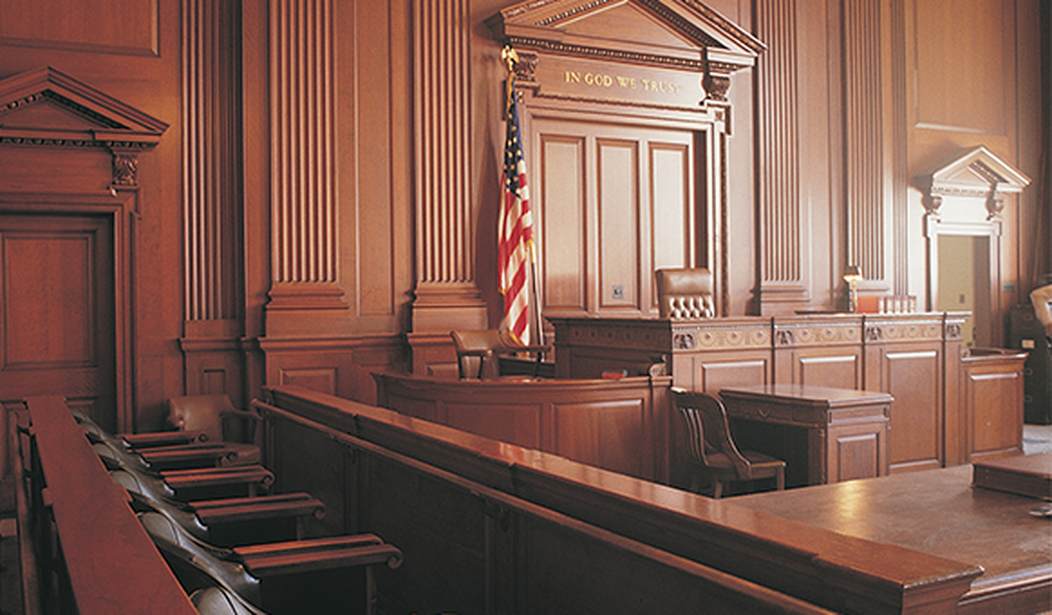Absolutely hilarious, especially for those who have watched the Ninth Circuit’s en banc machinations on Second Amendment issues for some time. Last week, a three-judge panel overturned a Ventura County, CA emergency measure that closed all gun stores at the beginning of the pandemic while allowing other “essential businesses” to operate. The ruling shredded Ventura’s attempt to preclude exercise of the right to bear arms, albeit on the relatively modest basis that it fails under any and all levels of scrutiny.
But as our RedState colleague Streiff points out today, that’s where the fun begins. Judge Lawrence Van Dyke authored the controlling opinion, but in an unusual step, wrote a separate concurrence to his own ruling. In it, Van Dyke predicted that the Ninth Circuit would vote for yet another en banc hearing to justify the unconstitutional and decided to pre-empt it with a scathing bit of satire:
But I write separately to make two additional points. The first is simply to predict what happens next. I’m not a prophet, but since this panel just enforced the Second Amendment, and this is the Ninth Circuit, this ruling will almost certainly face an en banc challenge. This prediction follows from the fact that this is always what happens when a three-judge panel upholds the Second Amendment in this circuit. See, e.g., Young v. Hawaii, 896 F.3d 1044, 1048 (9th Cir. 2018), on reh’g en banc, 992 F.3d 765 (9th Cir. 2021) (en banc) (overturning the three-judge panel); Peruta v. Cnty. of San Diego, 742 F.3d 1144, 1147 (9th Cir. 2014), on reh’g en banc, 824 F.3d 919 (9th Cir. 2016) (en banc) (same); Duncan v. Becerra, 970 F.3d 1133, 1138 (9th Cir. 2020), on reh’g en banc sub nom. Duncan v. Bonta, 19 F.4th 1087 (9th Cir. 2021) (en banc) (same). Our circuit has ruled on dozens of Second Amendment cases, and without fail has ultimately blessed every gun regulation challenged, so we shouldn’t expect anything less here. See Duncan, 19 F.4th at 1165 (VanDyke, J., dissenting).
My second point is related to the first. As I’ve recently explained, our circuit can uphold any and every gun regulation because our current Second Amendment framework is exceptionally malleable and essentially equates to rational basis review. See id. at 1162–63; Mai v. United States, 974 F.3d 1082, 1101 (9th Cir. 2020) (VanDyke, J., dissenting from the denial of rehearing en banc) (“Particularly in [the Second Amendment] context, we have watered down the ‘reasonable fit’ prong of intermediate scrutiny to little more than rational basis review.”). Our court normally refers to our legal test as a two-step inquiry, see United States v. Chovan, 735 F.3d 1127, 1136 (9th Cir. 2013), although it may be better understood as a “tripartite binary test with a sliding scale and a reasonable fit”—a test that “only a law professor can appreciate.” Rhode v. Becerra, 445 F. Supp. 3d 902, 930 (S.D. Cal. 2020). The complex weave of multi-prong analyses embedded into this framework provide numerous off-ramps for judges to uphold any gun-regulation in question without hardly breaking a sweat. See Duncan, 19 F.4th at 1164–65 (VanDyke, J., dissenting).
Given both of these realities—that (1) no firearm-related ban or regulation ever ultimately fails our circuit’s Second Amendment review, and (2) that review is effectively standardless and imposes no burden on the government—it occurred to me that I might demonstrate the latter while assisting my hard-working colleagues with the former. Those who know our court well know that all of our judges are very busy and that it’s a lot of work for any judge to call a panel decision en banc. A judge or group of judges must first write a call memo, and then, if the en banc call is successful, the en banc majority must write a new opinion. Since our court’s Second Amendment intermediate scrutiny standard can reach any result one desires, I figure there is no reason why I shouldn’t write an alternative draft opinion that will apply our test in a way more to the liking of the majority of our court. That way I can demonstrate just how easy it is to reach any desired conclusion under our current framework, and the majority of our court can get a jumpstart on calling this case en banc. Sort of a win-win for everyone.
This makes years of reading through dry legal opinions well worth the effort. Van Dyke then embarks on a veritable cornucopia of weasel-word prose that he fully expects — from experience — to read from the eventual en banc reversal. That word salad is worth consuming for its predictive value, but Van Dyke places the real entertainment in his footnotes. That’s where the rebukes truly appear:
1We really like this “not unlimited” language from Heller, and cite it often and enthusiastically. See, e.g., Young v. Hawaii, 992 F.3d 765, 782 (9th Cir. 2021) (en banc); Mai v. United States, 952 F.3d 1106, 1113 (9th Cir. 2020); Peruta v. Ctny. of San Diego, 824 F.3d 919, 928 (9th Cir. 2016) (en banc); Silvester v. Harris, 843 F.3d 816, 819 (9th Cir. 2016); Silvester, 843 F.3d at 829 (Thomas, C.J., concurring); Chovan, 735 F.3d at 1133; United States v. Vongxay, 594 F.3d 1111, 1115 (9th Cir. 2010). One might conclude it is the driving force in our circuit’s Second Amendment jurisprudence.
2We refer to strict scrutiny as a theoretical matter—a thought-experiment, really. Our court has never ultimately applied strict scrutiny to any real-life gun regulation.
Van Dyke also lambasted his colleagues over their interpretation of “intermediate scrutiny” on Second Amendment issues. Their language relies on a definition of “substantial burden” that always goes in one direction in such cases, Van Dyke argues:
4It is important to recognize that all the real work in our Second Amendment test is done right here. First, notice how much discretion this test gives us judges! There is so much flexibility in deciding whether anything short of an outright permanent ban (which nobody is dumb enough to enact anymore) places a “severe burden” on the Second Amendment. We can always point to stuff that isn’t banned in concluding this particular regulation isn’t a “substantial burden.” And second, once we’ve concluded that a challenged regulation does not place a “substantial burden on Second Amendment rights,” it’s really game over. A regulation that we’ve already determined does not substantially burden the Second Amendment can be upheld easy-peasy under our watered-down intermediate scrutiny test.
And since anything short of an outright ban is not considered a “substantial burden” in the Ninth Circuit, well …
6Another one of our favorite tricks. Once you frame Heller as speaking only to complete and total bans, it’s easy to side-step its holding. All a judge has to do is pretend the Supreme Court would have allowed anything short of DC’s drastic prohibition in Heller, instead of viewing Heller as easily correcting an especially egregious constitutional violation.
Next, Van Dyke predicts how an en banc proceeding would find a rational basis for closing down all gun stores in a pandemic:
9The first prong is always met in Second Amendment cases. Guns are dangerous, after all, so the government’s interest in ameliorating such danger is always important. At first we were worried this case might be a problem, because the regulations here don’t really have any nexus to the dangerousness of guns. But COVID-19 is dangerous too, so that substitutes in nicely.
This made me laugh out loud:
11 I know this sounds a lot like rational basis review. After all, if a government interest would be “achieved [more] effectively absent the [challenged] regulation,” it’s hard to see how that regulation would survive even rational basis scrutiny. But trust us, this is heightened scrutiny. So very heightened.
“You’re welcome,” Van Dyke concludes to his colleagues. I suspect they won’t feel too grateful about this treatment, but the rest of us should express our thanks for Van Dyke’s concise cuts against the manure of the Ninth Circuit’s interference. Recall that this is the same appellate circuit that ruled that Hawaiian cultural tradition overrules the Constitution when it comes to carry permits. That outcome in Young v Hawaii also came out of an en banc review that reversed the original appellate ruling.
Van Dyke’s colleagues have earned this derision, and perhaps this very public rebuke will have them thinking twice about reversing this decision in McDougall v County of Ventura. If nothing else, they may want to think twice before writing an opinion that would have to closely resemble Van Dyke’s satire.








Join the conversation as a VIP Member